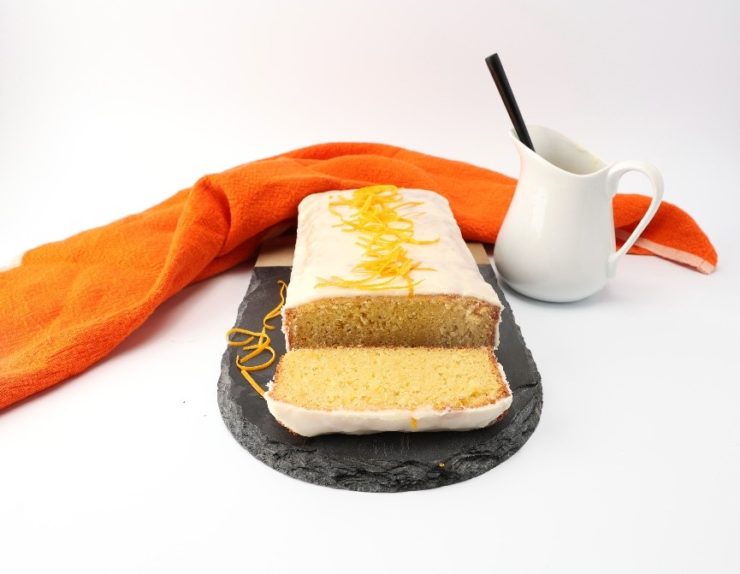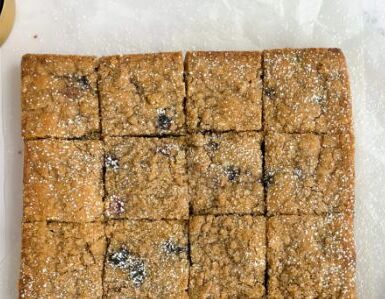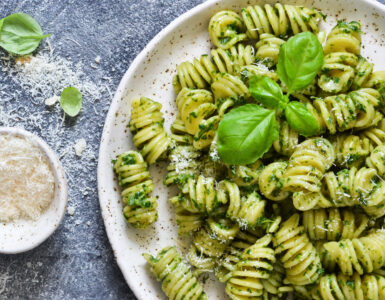Orange pound cake is the perfect winter treat!
Don’t let the cold weather stop you from cooking with fresh, citrus-y ingredients!
Tami Steggell shares two recipes for orange pound cake, one gluten free, so everyone can enjoy.
Find more recipes from Tami on Instagram, @bitemeindustries.
Old Fashioned Orange Pound Cake
Prep Time: 20 minutes
Cook Time: 1 hour
Total Time: 1 hour 20 minutes Servings: 10 slices
INGREDIENTS
Dry Goods: sift together
1 3/4 c all-purpose flour (220g)
2 Tbs cornstarch (16g)
1 tsp baking powder (4g)
1 tsp salt (6g)
Wet Goods
1 1/2 c sugar (300g) granulated or castor
2 tbs zest of 3 oranges (16g/.5oz)
1 c butter, softened (226g – 2 sticks)
4 oz cream cheese, softened (113g)
2 tbs orange juice, fresh (30ml)
1 tsp vanilla extract (5ml)
5 large eggs, room temperature (250g)
The Glaze
- 1 ½ c powdered sugar, sifted (180g)
- 2 tbs orange juice (30ml)
- 2 tbs heavy cream (30ml)
METHOD
1. Adjust the oven rack to the middle position and preheat oven to 325°F./163°C and prepare 9”x5” metal loaf pan (2lb/900g) with parchment or butter/floured, shaking any excess flour out.
2. In a medium-sized bowl, sift together flour, cornstarch, baking powder and salt. Set aside.
3. Blend together sugar and orange zest to release orange oils.
4. Beat the butter and cream cheese on high speed for 1-2 minutes until light, soft and fluffy. This can be done with a hand mixer or in the bowl of a stand mixer fitted with a paddle attachment.
5. Now add your orange sugar to your butter and cream cheese mixture and cream together.
6. Add the other half of your dry ingredients and beat for 2 minutes on high speed.
7. Turn off the mixture. Add the orange juice, vanilla extract and 2 eggs, beat until integrated.
8. Now add the other half of your dry goods, batter will be stiff.
9. Continue adding the remaining 3 eggs, one at a time, being careful not to over mix. Scrape down the sides of the bowl with a rubber spatula as needed.
10. Spoon the batter into the prepared loaf pan.
11. Bake for 60-65 minutes and use a toothpick to test for doneness. Toothpick should be clean when inserted into center. (Note: if baking in a glass loaf pan, the pound cake will need a longer to bake)
12. Remove from the oven, allow to sit in pan for 10-15 minutes. Then invert cake onto a wire rack.
13. Make the glaze: whisk together the powdered sugar, juice and heavy cream. If you prefer a thinner glaze add a splash more orange juice until desired consistency is reached. Spread over cooled bread, slice and enjoy as is or with whipped cream, fresh berries, ice cream, etc.
Notes
· Either weigh or use the spoon and level method for your dry ingredients so you’re not ending up with too much flour. I’m a huge proponent of weighing for speed and accuracy.
· Temperature of ingredients is important. Room temperature is key! Butter should be soft, but not overly soft. When you poke it with your finger and it’s easy to make an indentation without losing it’s entire shape, that’s the perfect temperature.
· Add the eggs slowly: keep the mixer running on low speed and add in eggs one at a time. Don’t rush the process!
· Bake to proper doneness: over baking will lead to a dry pound cake, remember it continues to bake while it’s cooking. When inserting a toothpick in the center and you’re left with a few moist crumbs, that’s perfect. Do not leave cake in pan too long, move to a cooling rack after 10 minutes.
Gluten Free Orange Pound Cake
Prep Time 30 mins
Bake Time 1 hr
Total Time 1 hr 30 mins
Serves: 10
INGREDIENTS
Wet Goods
1 c caster/superfine granulated sugar (200g)
2 tbs zest of 3 oranges (16g/.5oz)
3/4 c butter, softened (170g – 1 ½ sticks)
4 eggs, large, room temperature (200g)
1 tsp vanilla extract (5ml)
Dry Goods
2 c gluten free 1:1 flour blend (240)
⅔ cup almond flour (65g)
3 tsp baking powder (15g)
¼ tsp of salt (1.5g)
Alternately Add with Dry Goods:
3/4 c orange juice, fresh squeezed (180g)
The Glaze
1 ½ c powdered sugar, sifted (180g)
2 tbs orange juice (30ml)
2 tbs heavy cream (30ml)
METHOD
1. Adjust the oven rack to the middle position, pre-heat the oven to 350ºF (180ºC) and prepare 9”x5” loaf pan (2lb/900g) with parchment.
2. Dry Goods: In a bowl, sift together the gluten free 1:1 flour blend (w/xanthan), almond flour, baking powder, and salt. Set aside.
3. Add the sugar and orange zest to a bowl and use your fingertips to rub the zest into the sugar. This helps to release more essential oils from the zest.
4. Cream the butter and sugar (with the added orange zest) together until pale and fluffy. This can be done with a hand mixer or in the bowl of a stand mixer fitted with the a paddle attachment.
5. Add the eggs, one at a time, mixing well after each addition, until well combined. It’s very important that your eggs are at room temperature and that you add them one at a time to maintain the emulsion of the butter as much as possible. If you forgot to take your eggs out of the fridge, place them in warm tap water for 5-10 minutes before using them.
6. Add the vanilla and mix until combined.
7. Beginning and ending with the dry ingredients, alternately add the dry ingredients (in three batches) and the orange juice (in two batches) to the butter-sugar mixture, whisking well after each addition, until you get a fairly smooth cake batter with no flour clumps.
8. Transfer the cake batter into the prepared loaf tin, smooth out the top, and bake in the pre-heated oven at 350ºF (180ºC) for about 1 hour – 1 hour 5 minutes or until risen, golden brown on top and an inserted toothpick comes out clean. The loaf should have a large crack running along the center.
9. Allow to cool in the loaf pan for about 10-15 minutes, then transfer the cake out of the tin and onto a wire cooling to cool completely.
Notes
1. The alternating way of adding dry and wet ingredients helps to maintain the emulsion of the butter in the cake batter as much as possible. When alternating dry and wet ingredients, make sure to end with the dry.
2. If your final batter looks slightly split or curdled due to the large amount of acidic orange juice that you’ve added. Do not worry, it will come together perfectly.
3. Why so much orange juice? To help the gluten free flour absorb moisture.
4. Why use castor superfine sugar? Because superfine sugar has a finer grain than traditional granulated, allowing it to dissolve and mix more easily. This is useful in airy, delicate baked goods and desserts. You’ll often see it in recipes for meringues, souffles, macarons, puddings, and mousses.
5. If the cake starts browning too quickly or too much, cover it with parchment or foil and continue baking until done.















Add comment